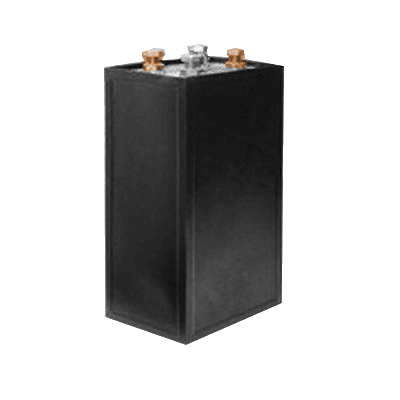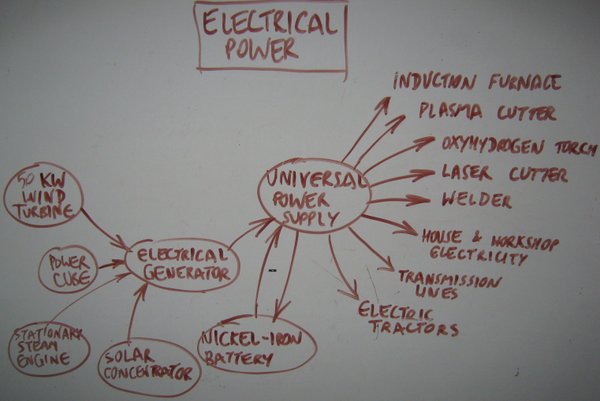Nickel-Iron Battery: Difference between revisions
No edit summary |
|||
| Line 47: | Line 47: | ||
==Research== | ==Research== | ||
* [[Battery Chemistry]] | * [[Battery Chemistry]] | ||
* [[Aluminum-Air Battery]] | * [[Aluminum-Air Battery]] | ||
Revision as of 19:13, 19 September 2011
| Nickel-Iron Battery | ||
|---|---|---|
| Home | Research & Development | Bill of Materials | Manufacturing Instructions | User's Manual | User Reviews | 
| |
Overview
The Nickel Iron Battery is the primary electrical energy storage device for the GVCS.
Detailed Description
The nickel-iron battery (NiFe battery) or "edison cell" is a storage battery having a nickel oxide-hydroxide cathode and an iron anode, with an electrolyte of potassium hydroxide (lye can be used as a substitute).
The active materials are held in nickel-plated steel tubes or perforated pockets.
It is a very robust battery which is tolerant of abuse, (overcharge, overdischarge, and short-circuiting) and can have very long life even if so treated.
It is often used in backup situations where it can be continuously charged and can last for more than 20 years.
Product Ecology
Made with
- 3D Printer - Casing
- Controller Box - Power
- Rod and Wire Mill - Wires, Tubes
Uses
- Universal Power Supply - Stores energy
See Product Ecologies for more information.
Components
- Casing
- Insulator
- Nickle
- Iron
- Plates
- Tubes
- Leads
- Wires
Specifications
| align="center" style="background:#f0f0f0;"|specific energy | align="center" style="background:#f0f0f0;"|30 -50 Wh/kg |- | energy density||30 Wh/l |- | specific power||100 W/kg |- | Charge/discharge efficiency||65%-80% |- | Energy/consumer-price||1.5 – 6.6 Wh/US$ |- | Self-discharge rate||20% – 30%/month |- | Time durability||30– 50 years |- | Cycle durability||Durable |- | Nominal cell voltage||1.2 V |- | Charge temperature interval||min.-40 °C – max.46 °C |}
Status
The Nickel-Iron Battery is currently in the research phase of development.
Research
See Also

